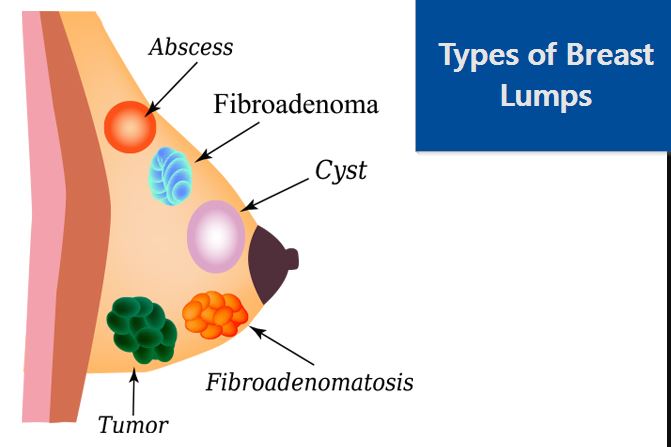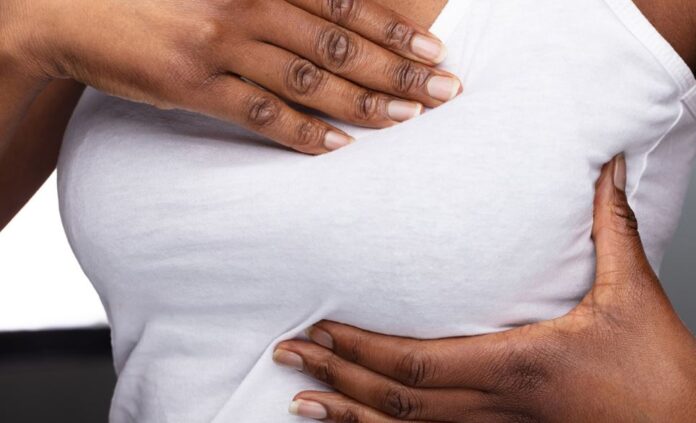The lump is simply the living tissue mass in our body. Every healthy tissue that can be skin, fat bone can have a mass or lump. In females lump in the breast is common. In an everyday lifetime, the lump on the breast can be felt. Every woman should be aware and know about the type of lump in the breast
What is a lump on the Breast?
A lump in the breast is the development of a mass breast which may be a sometimes alarming and concerning symptom, but keep in mind that not all breast lumps are cancerous.
There were lots of breast lumps, that were benign and non-cancerous. They might be just the growing or ungrowing tumor. Anyway, it is essential to take any new breast lump seriously and seek medical evaluation promptly. Here’s some important information on breast lumps and breast cancer:
Types of Breast Lumps:

Benign (Non-Cancerous) Lumps:
Most breast lumps are benign and may be caused by different and multiple factors. Some of the breast lumps or masses are cysts, fibroadenoma, or changes in breast tissue.
Malignant (Cancerous) Lumps:
Breast cancer can also present as a lumpy mass. Breast cancer can be invasive and noninvasive.
- invasive can be spreading into surrounding tissue
- non-invasive (confined to the milk ducts or lobules).
The most common type of breast cancer is invasive ductal carcinoma.
Signs and Symptoms:
- A lump or thickening in the breast or underarm area.
- Changes in the size, shape, or appearance of the breast.
- Nipple changes, such as nipple discharge, inversion, or skin changes (like redness or scaling).
- Pain in the breast, although most breast cancers are painless in the early stages.
Risk Factors for Breast Cancer:
- Gender: Breast cancer is more common in women, but men can also develop it.
- Age: The risk of breast cancer increases with age.
- Family History: A family history of breast cancer can increase your risk.
- Genetic Mutations: Inherited mutations in BRCA1 and BRCA2 genes can raise the risk.
- Hormone Replacement Therapy (HRT): Some forms of HRT may increase the risk.
- Lifestyle Factors: Obesity, excessive alcohol consumption, and lack of physical activity can contribute to the risk.
Diagnosis:
- If you discover a breast lump or experience concerning symptoms, consult a healthcare provider.
- Diagnostic tests may include mammograms, ultrasounds, biopsies (tissue samples), and, in some cases, MRI scans.
Treatment:
- Treatment options for breast cancer depend on factors like the type and stage of cancer. Options may include surgery, radiation therapy, chemotherapy, hormone therapy, targeted therapy, and immunotherapy.
- Early detection and treatment can significantly improve outcomes for breast cancer.
Conclusion
It’s important not to ignore any breast changes or symptoms, as early detection and prompt medical evaluation can lead to better outcomes. Regular breast self-exams and routine mammograms can help in detecting breast cancer at an early, more treatable stage.
If you or someone you know finds a breast lump or experiences any concerning breast symptoms, it’s crucial to seek medical attention for a proper evaluation and diagnosis.


